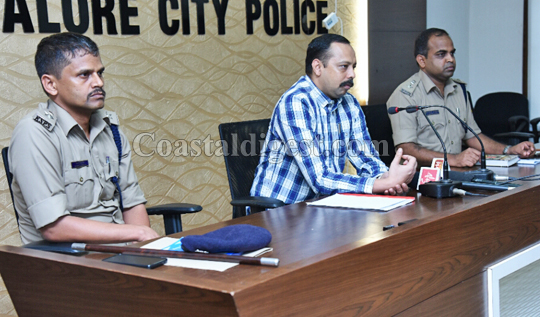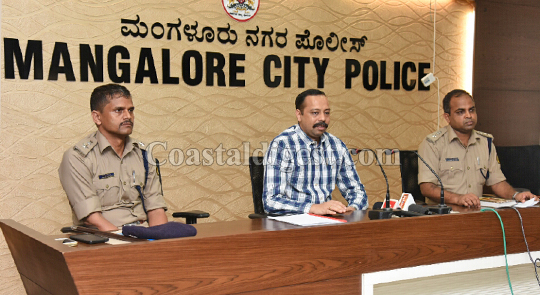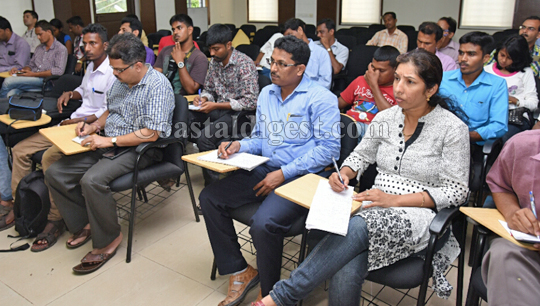Mangaluru, Oct 18: In the sensational Prashanth Poojary murder case, Mangaluru CCB police have arrested one alleged main accused and three co-conspirators on Saturday.

The arrested have been identified as Mohammed Haneef (24), resident of Bajpe Adyapady, Mohammed Ilyas (27), resident of Moodbidri, Ibrahim Liyaqat (26), resident of Naringana in Bantwal taluk and Abdul Rasheed (39), resident of Kilpady. Mohammed Haneef is one of the main accused in the murder case.
Addressing a press conference here on Sunday, Mangaluru City Police Commissioner S Murugan said that the investigating police team had identified five other main accused involved in the case who were absconding. The actual execution of the crime was done by six persons, he said.
On interrogation, the four arrested have confessed their involvement in two separate assault cases on Ashok and Vasu in Moodbidri police station limits and Jaya Kotian in Bajpe police station limits. In these cases, the police teams have collected evidence against the accused in this regard, he informed.
Mr Murugan said that the motive seemed to be communal, since the victim Prashanth was an activist belonging to a Hindutva outfit. The crime was a misguided venture by the accused, sparked by enmity due to previous communal attacks in the taluk, he said, adding that the crime should not be interpreted as a communal attack.
He also said that the police had not recorded the statement of eyewitness Vaman Poojary who allegedly committed suicide few days after the murder of Prashanth. The death may not be due to pressure from the police. There is no record of calls from overseas or persons involved in the murder, he told media persons.
It may be recalled that Dakshina Kannada MP Nalin Kumar kateel and other Sangh Parivar leaders had claimed that Vaman Poojary had received calls from Pakistan before he committed suicide.






Comments
There are a few interesting things with time in this post but I don’t
know if I see these center to heart. There is some quality
but I will get hold opinion until I look into it further.
Good article, thanks and we wish more!
Also visit my weblog clash of lords
2 hack free: http://www.realhacks24.com/clash-of-lords-2-hack/
Next time I read a website, I really hope that it doesnt disappoint me as much as this one.
I mean, I know it had been my choice to learn, but I really
thought youd have something interesting to say.
Also visit my website; dungeon hunter 5
hack free download: http://Www.Darkhacks24.com/dungeon-hunter-5-hack/
Add new comment